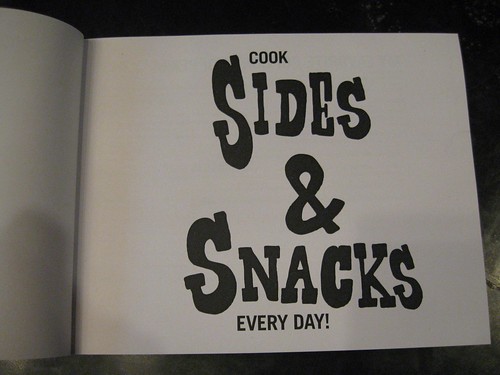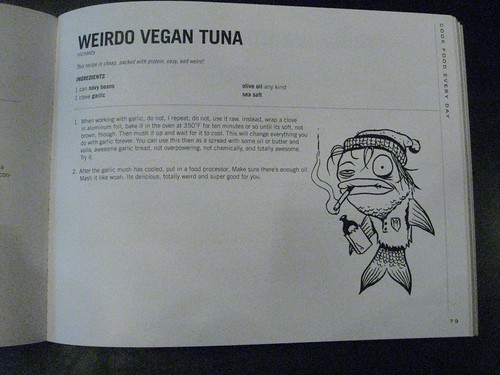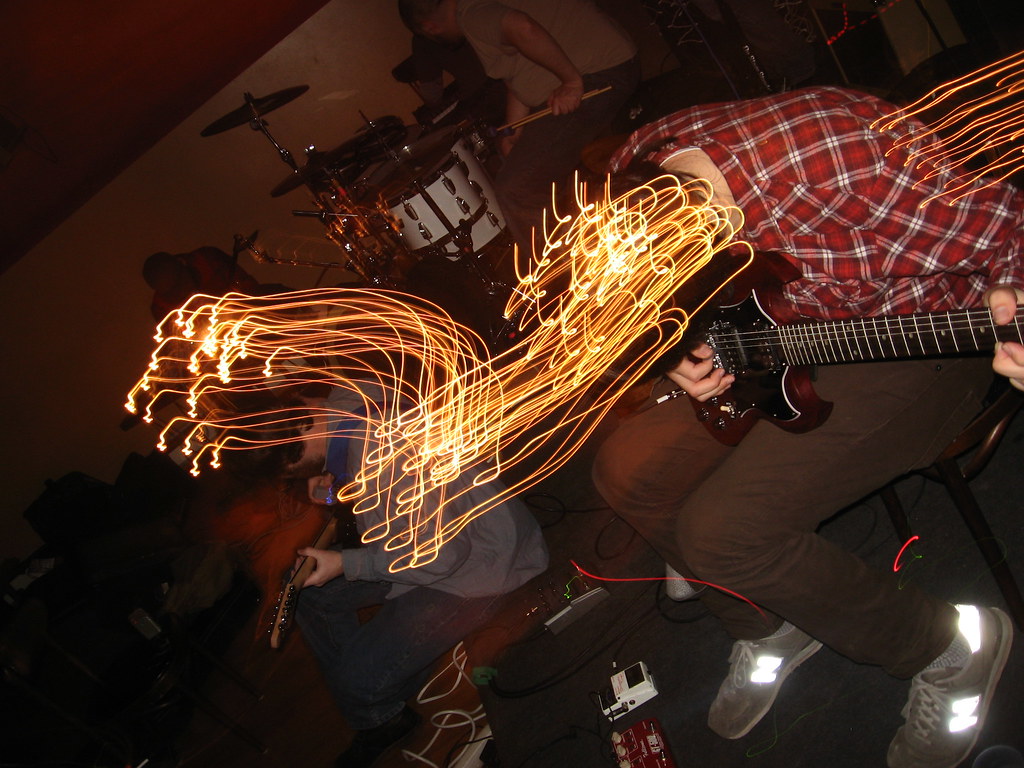Last week, CFED went to Montana. Editor, Kristina Nies, gave a paper at the ASFS/AFHVS/SAFN conference about the creation of CFED and some of the ways it was different from traditional community cookbooks. Many of the paper’s points were elaborated, and there was some good feedback from conference-goers.
**
HTML to PDF to Book – The Making of a New Community Cookbook
Kristina Nies
Presented at the Joint 2011 Annual Meetings & Conference of the Agriculture, Food, and Human Values Society (AFHVS), Association for the Study of Food and Society (ASFS), & Society for Anthropology of Food and Nutrition (SAFN), June 9-12, 2011.
Thank you – this paper would not be possible without the encouragement, resources and editing of Ilona Baughman, Netta Davis and Beth Forrest, and the hard work and dedication of the over 50 person volunteer team that contributed to the making of Cook Food Every Day.
**
In 2009, I compiled and edited a community cookbook entitled Cook Food Every Day. All the recipes, artwork, editing and contributions came from members of an online community, and all the proceeds benefited the Greater Boston Food Bank.
This cookbook originated in a digital community and how might it vary from one that is based in fixed, physical geography? Is it possible to glean insights into community members and structures when part of the virtual space becomes material? How does food function in the different spaces it inhabits with these community members – both online and in the physical realm? These are just some of the many questions that this project has raised and I welcome your feedback and input on how to further pursue this research.
History of community cookbooks
In the United States, community cookbooks date as far back as the Civil War, where they were created by women to provide funds to assist veterans, orphans, widows and those in hospitals.[1] The tradition continues today, where community cookbooks are used as fundraising tools by many local organizations.
In addition to being a creative means of raising money for non-profit causes, community cookbooks also function to define the culture of the community creating them. The recipes, and authors, that donned the pages, acknowledge who a community member is, and what she thinks others should be eating. Community cookbooks are a snapshot of a times, places, social statuses, access to foodstuffs, and an indication of what some community members where making, eating and what they deemed book-worthy.[2] As Ilona Baughman, argued: community cookbooks actually reflect “what authors want their audience to think they eat at home.”
Cook Food Every Day is a community cookbook that derives from a different start point. Rather than being a product of a group or organization that is community defined by religion, geographical proximity or a social club it stemmed from a large number of recipes shared within an online community – that were collected, bound and sold, with the proceeds being donated – rather than used as a booster.
Community
Traditional definitions of community require that the persons share a common shared environment. Online communities, allow people to be accessing these communities, via the internet, while living in different spaces (which can be multiple) while still retaining community membership.
Message Board defined
The community that created Cook Food Every Day is one that posts to an internet forum, an un-moderated message board. Anyone can create an account – by registering a username and password. Individuals also have the option to add a name, location, website url and/or photo to their account profile. Most users do not reference their legal name, but rather use an avatar.
Registered users can create threads, or topics, and can also comment on, and search for other threads.
Similarities to “traditional” community cookbooks
There are many similarities between Cook Food Every Day and traditional (or geographically-specific) community cookbooks. For instance:
Like most community cookbooks, Cook Food Every Day has a cover, and title page:
a forward or introduction
a forward or introduction
separated by section dividers
the contributors are acknowledged for donating recipes
and there are photos and drawings dispersed throughout – within the text, rather than on separate pages
and the recipes are titled, ingredients and quantities are listed followed by directions.
and there are photos and drawings dispersed throughout – within the text, rather than on separate pages
and the recipes are titled, ingredients and quantities are listed followed by directions.
My original idea for this project, was to collect the recipes that people had posted on the message board, compile them, then go get them photocopied and comb bound at a copy shop, a cheap and fast choice that many community cookbooks follow. Three community members with printing, editing, and publishing experience offered to collaborate on the project. At our first meeting, we realized we could do 3 things: bind it, use color and complete it in less than 3 months.
The list of those involved mushroomed to meet and exceed the needs and deadlines. Artists donated drawings, cover art, poster designs; reporters drummed up support and helped get write-ups in local papers; show promoters and bookers helped with the logistics of securing a venue for its release party; people contributed over 100 recipes and stories about the dishes; community members from out-of-state helped set up websites and blogs to promote the book and secure a Paypal account for shipping, and people stepped up at the last minute to help edit the 130 page book two days before the final print deadline.
On Friday, December 11, 2009, the impossible, creating a book in under three months, was accomplished.
**
The very small window of recipe collection and book printing was only possible because of the online community. The internet as medium, allowed for several people to be in charge of promoting and working on the project simultaneously, from a variety of locations. It was not just me, but a network of people convincing others to donate their recipes or reminding people about the stories behind dishes or encouraging people to illustrate recipes. Community members could “top” discussion threads throughout the day and evening, so a variety of people would see the topic.
Many of the contributors have met or interacted with each other outside of the online community, but not all have. The message board is Boston-based, but many people continue to participate after they have moved away. Several recipes came from California, New York, Washington D.C., a few more off the coast of Maine, but the majority of the recipes came from residents in and around Boston, including Allston, Brighton, Cambridge, Medford, Somerville, and Watertown.
Food as a starting point
Unlike other community cookbooks that have fundraising as a reason for starting a project, Cook Food Every Day began because I noticed there were a large number of threads discussing food, many of which contained recipes. While the message board is primarily focused around music shows, topics of discussion are by no means limited to just music. From debates over where one can find the best burrito, to someone asking for Photoshop help, the online forum runs the gamut of topics, including parodies, news items, pop and (and not so pop) culture. I did notice a large number of discussions about food and proposed the idea to collect the recipes, bind them, and have them ready for the holidays. There is also lively discussions about dietary restrictions, which is visible in the final product that indexes “gluten-free”, “dairy-free”, “nut-free”, “vegetarian”, and “vegan” recipes.
After some people said they might purchase a book, it was decided that all of the proceeds should go to a food bank or shelter.
While some members people remarked that they were surprised anything “good” was coming out of this online community, there is a history of members holding fundraising events and participating in several different non-profit organizations.
**
Some recipes previously posted were combined with new suggestions. The only guiding theme was “food to share” which was open to the broadest interpretation of food, causing some to donate recipes of dishes they had made or shared with other community members. All recipes submitted were included.
The layout design of the recipe pages encourages a more conversational tone. The format consisted of:
Recipe Title
Contributor’s Name
Website
Email
Brief description of the recipe
Ingredients and quantities
Directions
Optional photos could be contributed
Optional artwork – though most of this was done secondarily
Some pages include conversation bubbles where people who have consumed the recipe talk about where or when they ate it and how it tasted.
Much of the current analysis regarding reading community cookbooks as “texts” focuses around looking at how current-day researchers can use community cookbooks to better understand the lives of the women who shared recipes and the communities they were a part of. In Eat My Words, Theophano states: “in displaying their cuisine, the compilers and editors of [community] cookbooks also self-consciously portray and define an image of themselves, their cultural groups, and their own rendering of their groups’ history and identity.”[3]
While this analysis rings true for most community cookbooks, it is not 100% accurate for Cook Food Ever Day. There was an intentional rejection of most references to the message board – it is not directly named anywhere within the book, though the introduction acknowledges its existence. At the same time, there are some “inside jokes” and references that non-community members would not know have double or triple meanings to community members. So the identity of the community through the cookbook is actually different to outsiders and insiders, which is unlike most community cookbooks.
One example is the title itself. Cook Food Ever Day is a reference to an art show Draw Drawings Every Day, which began as a 2008 thread where a community member encouraged others to post images of their works and works-in-progress. It became a way for people to showcase their work, discuss techniques and offer and receive encouragement to draw more. The thread inspired the 2009 art show, with the same title, which featured many of the online community members works. Copies of Cook Food Every Day were sold at the 2010 incarnation of the show, which was titled “Hey I Know That Guy” but was still referred to by some community members as “the draw drawings show”.[4]
**
What shows or events online community members attend “in real life” often dictate what conversations persons engage with online. People sometimes meet-up for drinks or food before shows and use the message board as a way of communicating with others – sometimes offering open invitations for meet-ups. Conversations about upcoming shows often continue at the venue – discussing other bands, other events, and sometimes leads to discussions of message board gossip. Some people, via texting and web-enabled phones, will discuss the goings on at a show on the message board during or between performances. After events or shows conclude, participants will often go back to the thread discussing the upcoming show and talk about the performances and goings on at the event. Persons who could not attend sometimes discuss why s/he were not able to go, others talk about the next event where ____ performer or act will be, etc.
This format was mirrored throughout the Cook Food Every Day release show. The format of the event, was a bit different than an art show or musical performance. Billed as a “Cookbook Release Party, Show & Bake Sale” the event was held at a bar in Somerville, MA.
Contributors to the book were invited to cook one or more of their recipes to sell to help defray the cost of the room rental. People volunteered to work the door, sell books, emcee, and others collected bake sale donations. Four cookbook contributors that were in bands and performing acts were invited to perform throughout the evening.
Throughout the night, several attendees where posting to the message board, via their cell phones, updating on the status of the event.
After the show, where all 150 cookbooks sold out, many made comments online about the event – how the bake sale items tasted, how the bands sounded, others posted photos and videos from the performances. I shared with the group the tally of the funds and promised a second printing.
After expenses, $1077 was donated to the Greater Boston Food Bank. An additional book order was made for 100 copies, and I continued to make arrangements with local bookstores to carry the cookbook, on consignment. There are still 80 unsold books, boxed in my living room.
After publication, the book continued to weave in and out of online and physical spaces. With people discussing the book online as well as cooking and sharing recipes.
**
So what can be gained from looking comparatively at traditional community cookbooks vs. one created from an online community?
The food and discussion of food, is woven in and out of the online and tangible world spaces of community and non-community members alike. Eating food, is an embodied experience – one has to be present, in a physical body to consume physical food. Talking about food, can be both embodied and disembodied. I can talk to you now about how something tasted – remembering an embodied experience. Or I can think about how something might taste, something that is not a memory of an embodied experience, it’s a slightly disembodied imagination of what something might taste like. But both still rely on me engaging with my embodied senses – imagined or otherwise.
This speaks to the newer understanding of the embodied experiences of interacting in digital communities. Logging onto Facebook involves me either typing on a keypad or speaking into speech-to-text software, requires me to physically engage with a machine to participate in a digital community. Here I am intentionally not using the term “virtual” because like the message board community, I have digital and tangible relationships with many of my friends in both communities. Both communities have social rules (even if they are broken, it is clear to community members that a line has been crossed), there are language rules (again, that are sometimes broken) and rules of social engagement. Both systems have “private message” options for different forms of communication than that that is appropriate for the general community.
It may be that in the absence of legal names and photos of community members physical faces, that food preferences – like musical choices – are heightened markers of personal identity. These embodied aesthetics are present in both the virtual and physical worlds, and offer particular ways of knowing and understanding community members who can – and often do – obscure most aspects of their physical world identifiers, like legal names and photos.
Food as a window into a virtual community can help reveal the very complex, woven relationships that develop in both virtual and physical spaces. The connections between community members are not restricted to only the message board, they often reach into the physical worlds, whether it being the sharing of a recipe, or attending a show together.
[1] Janet Theophano, Eat My Words: Reading Women’s Lives Through the Cookbooks They Wrote, 1st ed. (Palgrave Macmillan, 2003), 253.
[2] James R. Shortridge, The Taste of American Place: A Reader on Regional and Ethnic Foods (Rowman & Littlefield Publishers, Inc., 1999), 112.
[3] Theophano, Eat My Words, 83.
[4] The thread was started in June of 2008. The first art show was held 2 January 2009 at the Washington Street Art Center, 321 Washington St. Somerville, MA. The cookbook was available for purchase at the January 23, 2010 show. The event was held again this year on January 15th.



















No comments:
Post a Comment